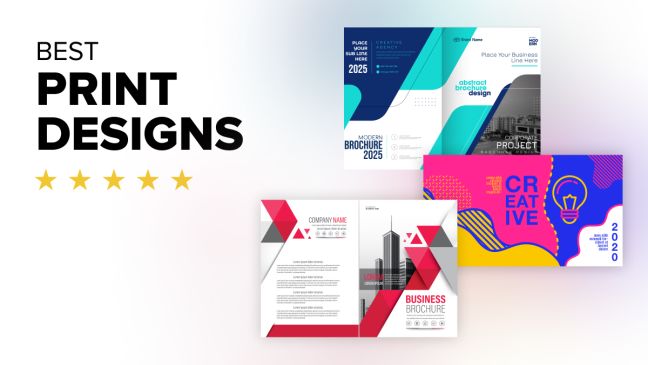The Art of Print Design: Elevating Brands and Engaging Audiences

Mastering Ad Design: Captivating Audiences and Driving Conversions
May 22, 2024
Mastering the Art of SEO Services: Elevating Your Online Visibility and Growth
May 22, 2024The Art of Print Design: Elevating Brands and Engaging Audiences
Print design remains a powerful and timeless medium for conveying messages, building brands, and engaging audiences. From business cards to brochures to posters, print materials offer a tangible and tactile experience that digital mediums cannot replicate. In this blog, we’ll explore the importance of print design, key principles to consider, and tips for creating compelling and impactful print materials that leave a lasting impression.
Thank you for reading this post, don't forget to subscribe!The Importance of Print Design
Tangible Experience
Print materials provide a tangible experience that engages the senses and leaves a lasting impression on the audience. The physicality of print, from the texture of the paper to the quality of the printing, adds depth and richness to the design, making it more memorable and impactful than digital alternatives. Print materials create a sense of authenticity and craftsmanship that resonates with audiences and enhances brand perception.
Brand Identity
Print design plays a crucial role in shaping and reinforcing brand identity. From business cards to letterheads to packaging, print materials are an extension of your brand and serve as a visual representation of who you are and what you stand for. Consistent branding across all print materials helps build brand recognition and trust, making your brand more memorable and recognizable to your audience.
Targeted Marketing
Print materials offer a targeted and personalized approach to marketing, allowing you to tailor your message to specific audiences and demographics. Whether it’s a direct mail piece sent to a select group of customers or a brochure distributed at a trade show, print materials allow you to reach your target audience in a tangible and impactful way. Print design enables you to create customized and tailored experiences that resonate with your audience and drive engagement.
Key Principles of Print Design
Clarity and Simplicity
Keep your print design clean, uncluttered, and easy to understand. Use clear and concise messaging that communicates your key points effectively. Avoid overcrowding your design with too much text or visual elements that can overwhelm the reader. Instead, focus on a single, compelling message and design your print materials around it to ensure maximum impact and readability.
Visual Hierarchy
Create a clear visual hierarchy in your print design to guide the reader’s eye and emphasize key points. Use size, color, and placement to differentiate between different elements such as headlines, body text, images, and CTAs. This helps readers quickly understand the most important information and encourages them to engage with your print materials.
Quality Printing
Invest in high-quality printing to ensure that your print materials look professional and polished. Choose the right paper stock, finish, and printing technique that complement your design and reinforce your brand identity. Quality printing enhances the visual appeal of your print materials and creates a positive impression on the audience.
Tips for Creating Compelling Print Design
Use High-Quality Imagery
Use high-quality images and graphics that are relevant to your message and aligned with your brand identity. Invest in professional photography or illustration to create visuals that capture attention and convey your message effectively. High-quality imagery enhances the visual appeal of your print materials and makes them more memorable to the audience.
Incorporate Interactive Elements
Consider incorporating interactive elements into your print design to engage the audience and create a memorable experience. This could include die-cutting, embossing, foil stamping, or interactive QR codes that encourage readers to take action. Interactive elements add depth and interest to your print materials and make them more engaging and interactive for the audience.
Experiment with Typography
Typography plays a crucial role in print design, setting the tone and personality of your brand. Experiment with different fonts, sizes, and styles to create visual interest and hierarchy in your print materials. Use typography creatively to convey your message and evoke emotions in the audience. Be mindful of readability and legibility, and choose fonts that are easy to read in print.
Conclusion
Print design is a powerful and versatile medium for conveying messages, building brands, and engaging audiences. By focusing on clarity, simplicity, and quality, you can create print materials that resonate with your audience and leave a lasting impression. High-quality printing, visual hierarchy, and interactive elements are key strategies for creating compelling and impactful print materials that elevate your brand and drive engagement. Keep experimenting, refining, and iterating on your print design to create memorable and effective print materials that connect with your audience and achieve your marketing goals.
For more information:www.ecbinternational.com


